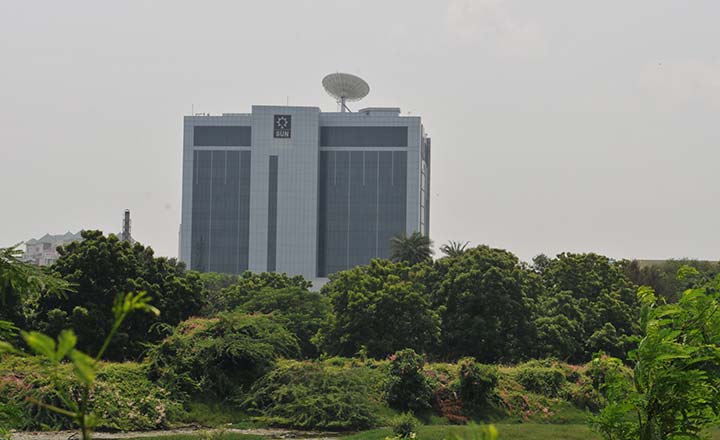The inextricable link between television broadcasting and politics in Tamil Nadu is well known. The same came to the fore again during the just concluded state election. As three of the four exits polls gave the prime opposition party DMK a clear majority, the Sun TV stock (owned by DMK kin) ran up an impressive 10% in a single session. After an incredibly difficult five years, where revenue growth was hard to come by, there was finally something to make the broadcaster smile. In less than two days, however, it was clear that the market had jumped the gun.
On May 19, the day the results were announced, the stock took a severe beating, falling 13%. If the stock price is any indication, the return of AIADMK under Jayalalithaa doesn’t bode well for Sun TV. For starters, the government is expected to back Arasu Cable Corporation — the state’s official cable distributor — which would put added pressure on Sun’s already troubled cable distribution business. Arasu already reaches out to 85 lakh homes. At its peak, Sun’s distribution arm, Sumangali’s reach was about 80 lakh in TN.
This shift in political patronage only make matters worse for Kalanithi Maran, executive chairman, Sun TV Network. In fact, Sun TV’s fortunes have reversed entirely from the time when Maran’s granduncle, M Karunanidhi, was the state’s CM. Its success was most obvious between 2007 and 2011 when revenues zoomed from Rs.726 crore to Rs.1,970 crore, a growth of over 171%. Much of this growth was on account of its dominant position in the cable distribution business, which went out to 1.75 crore homes across the state. “A non-Sun network channel could never get on the prime band. With this kind of monopoly, their distribution revenue was huge,” says P Sakilan, president, Thamizhaga Cable Operators Welfare Association. During the five years the DMK was in power, Sun’s subscription revenue soared 150% from Rs.201 crore to Rs.502 crore. For FY15, Sun’s total revenue was at Rs.2,243 crore, a growth of just 14% compared with that of FY11. More importantly, its ad revenue growth has been oscillating between single digits for the past two years. “It is an open secret that Sun today is reducing its advertising rates,” says a media planner. The company could not be reached for comments.

In the past, large advertisers such as GSK or soft drink majors parked all their TV budget for the state with the Sun TV network. According to B Shankar, CEO, Fourth Dimension, which handles advertising sales for the Puthiya Thalaimurai bouquet of channels, there is now a clear case of segmentation in Tamil Nadu. Now, large names such as GSK park around 60% of the money with Sun, and rest across other channels. “Besides, there are a host of local advertisers with smaller budgets who are spending on networks such as ours,” says Shankar. For its part, Sun TV charges around Rs.35,000 for a 10 second spot, pretty much what it was five years ago and a far cry from its ability to increase rates at will. Its gross rating point (GRP) too is down at least 20% from 1,700 early this year. Rivals such as Star-owned Vijay TV are at around 300 GRPs.
A major reason for the dip in advertising, which would be raised twice a year earlier, is dwindling distribution. “From a peak of 40 lakh connections in Chennai, Sumangali’s reach is down to 8.5 lakh,” says Sakilan. Considering that about 60-65% of Sun’s revenues across its 33 channels in South India come from Tamil Nadu, this is worrisome. Moreover, of the Rs.4,600 crore advertising market in the South, as much as Rs.1,800 crore comes from the state. This is thus one territory that Maran can’t afford to lose.
The rest of the South too is not looking pretty for Sun TV, having ceded its pole position to players such as MAA and Asianet, both owned by Star. “Sumangali is now a fringe player in the rest of Tamil Nadu,” adds Sakilan. For a network once on top, it’s now a fight to remain on the prime band.












 Just one email a week
Just one email a week